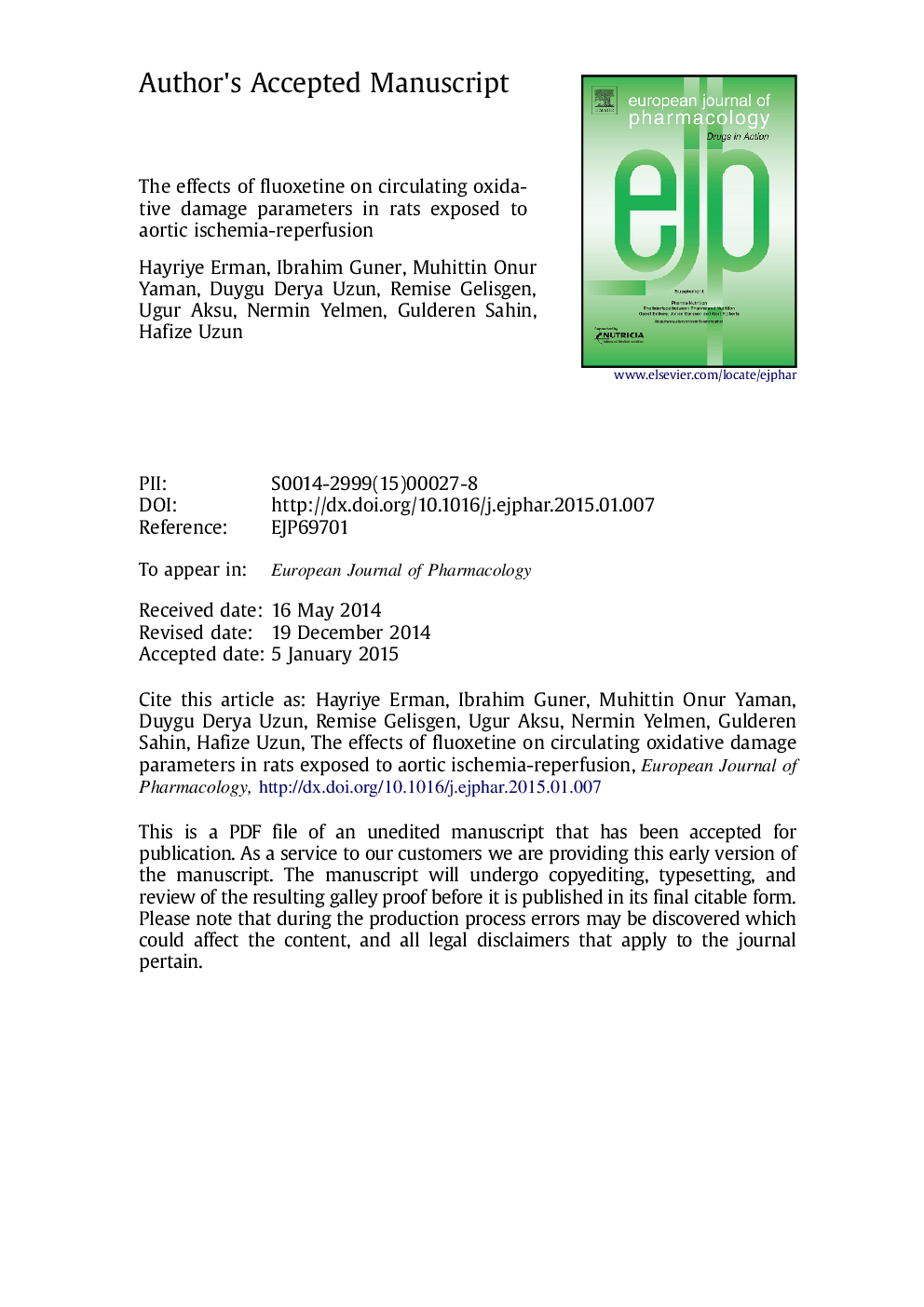| Article ID | Journal | Published Year | Pages | File Type |
|---|---|---|---|---|
| 5827565 | European Journal of Pharmacology | 2015 | 20 Pages |
Abstract
Oxidative stress and reperfusion injury may develop in different ischemia-reperfusion (IR) models. Growing evidence links altered lipid protein redox-homeostasis with IR. The effect of fluoxetine (FLX; N-methyl-3-[4-(trifluoromethyl) phenoxy] benzenepropanamine), on the lipid protein redox-homeostasis mechanisms in the rats exposed to aortic IR is unclear. We aimed to investigate the effects of FLX on circulating protein oxidation and lipid peroxidation parameters, such as ischemia modified albumin (IMA), lipid hydroperoxide (LOOH), prooxidant antioxidant balance (PAB), erythrocyte glutathione (GSH), CuZn-superoxide dismutase (CuZn-SOD), ferric reducing antioxidant power (FRAP), as potential IR biomarkers. Wistar rats were randomized into three groups (n=7/group): 1) Control (sham laparotomy); 2) IR without FLX, (60Â min ischemia and 120Â min reperfusion); 3) IR with FLX (FLX+IR) (FLX 20Â mg/kg/day, i.p. for three days before surgery). All of the aforementioned parameters (IMA, LOOH, PAB, GSH, CuZn-SOD, and FRAP) were measured spectrophotometrically. IMA, LOOH, and PAB levels in IR group were significantly higher than the control (P<0.01 respectively) and fluoxetine groups (P<0.01, P<0.01, and P<0.05 respectively), whereas CuZn-SOD activities, GSH and FRAP were significantly lower in IR groups. Fluoxetine group significantly reduced IMA when compared to IR group (P<0.001) and control group (P<0.01). With respect to IMA, LOOH and PAB, impaired redox homeostasis is substantially more prominent in aortic IR. The antidepressant FLX has profitable effects on circulating redox status in rats exposed to aortic IR. FLX administration before IR might decrease the surgery-enhanced free radical production; taken together, the antioxidant effects of FLX supplementation should be considered in future studies.
Related Topics
Life Sciences
Neuroscience
Cellular and Molecular Neuroscience
Authors
Hayriye Erman, Ibrahim Guner, Muhittin Onur Yaman, Duygu Derya Uzun, Remise Gelisgen, Ugur Aksu, Nermin Yelmen, Gulderen Sahin, Hafize Uzun,
